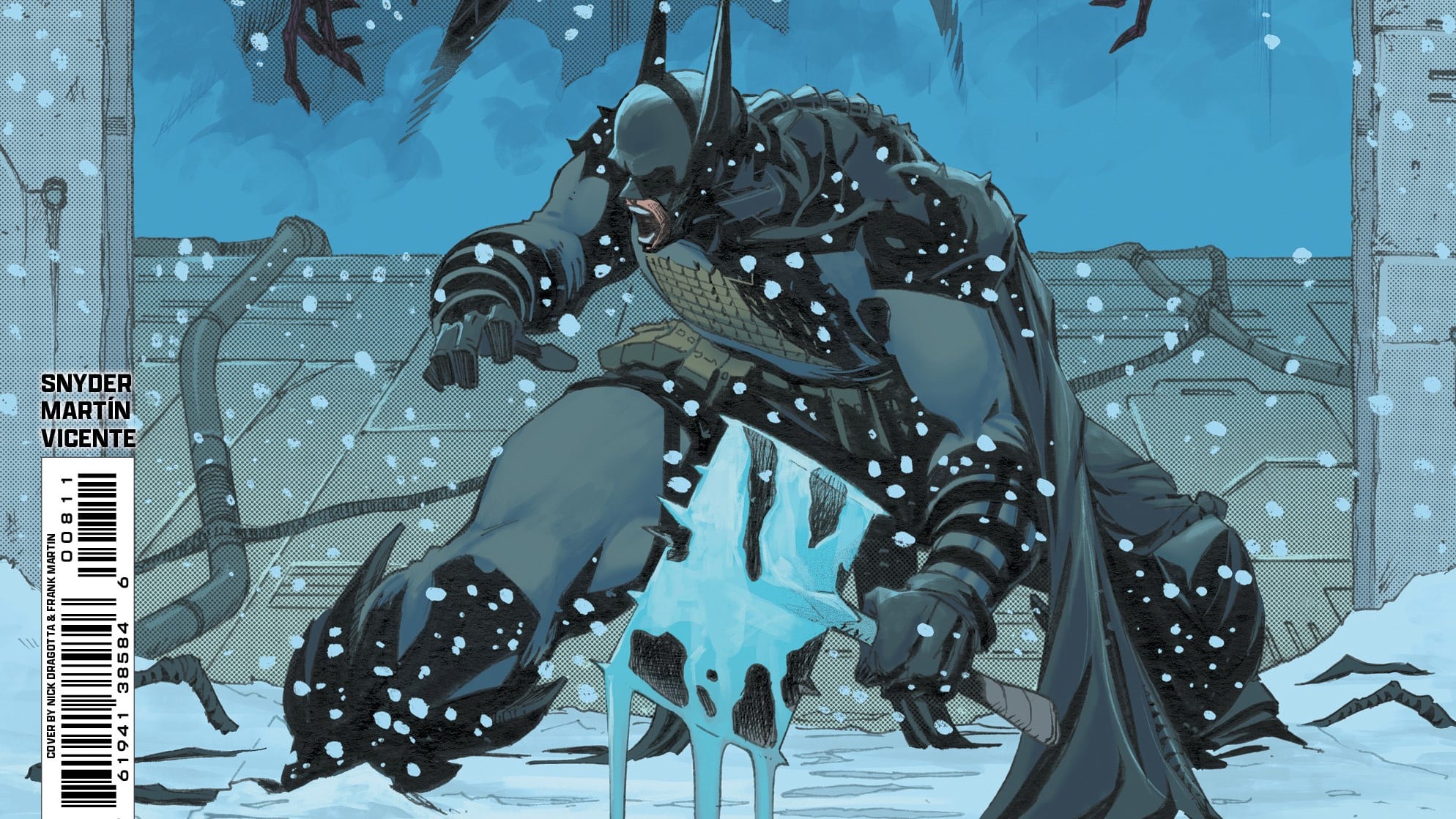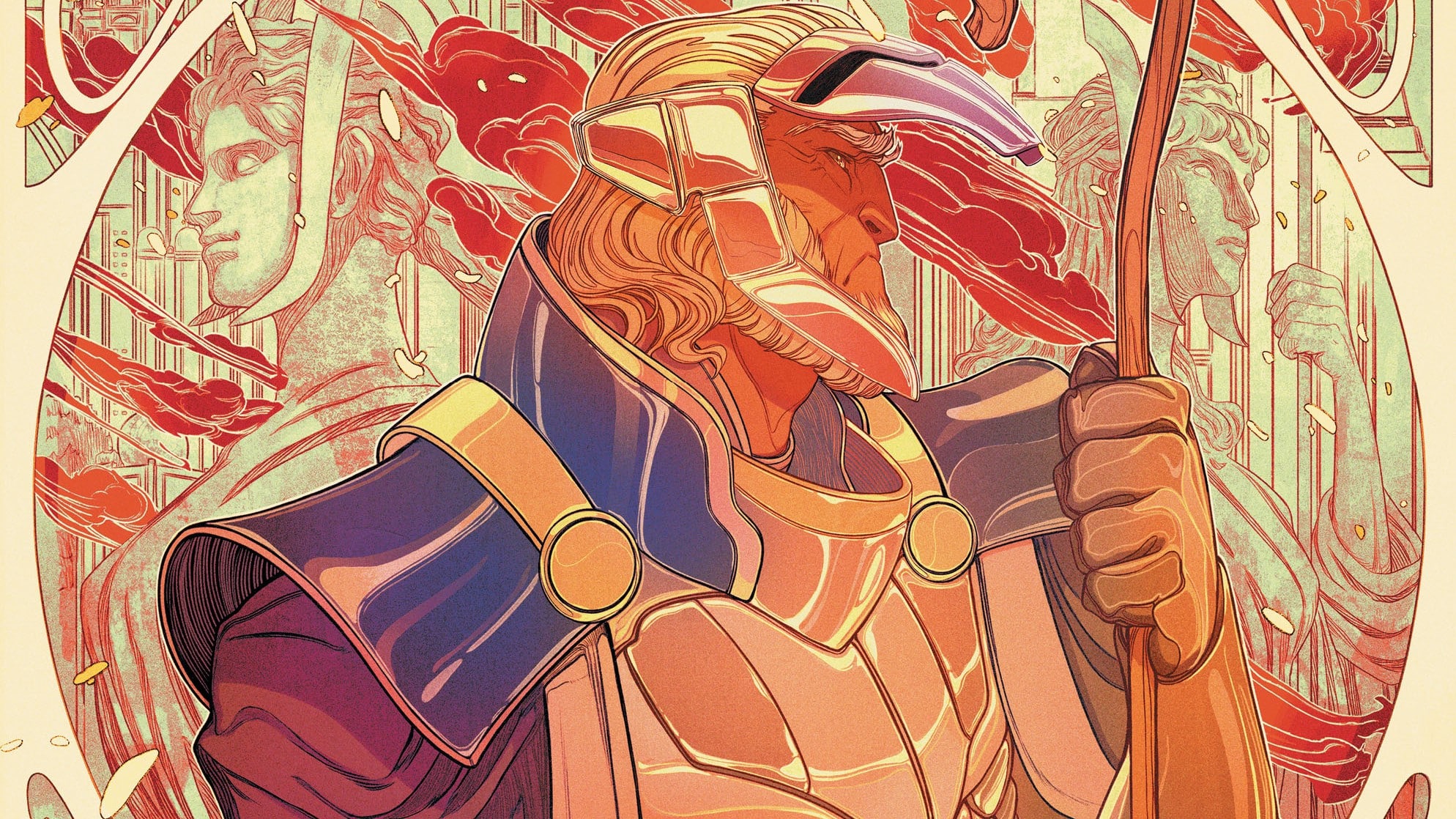Welcome, everyone, to our first monthly edition of Talking Absolute …, where we’ll focus on the storylines, controversies and themes that have captured our imaginations in the Absolute DC titles each month.
April was the first month to have releases from all six series, so what better time to start than this? So far, we at ComicsXF have enjoyed what we’ve seen. It might be more of a reflection of my fickle nature, but I’d say the fact that my personal Absolute DC rankings change so frequently is a positive indication of the baseline level of quality across the line so far.
Having said that, the three issues I’m covering today were undoubtedly my favorites from April. Wonder Woman wrapped a strong second arc, Flash kept up its lightning momentum and Martian Manhunter continued to blow my mind.
Oh, and for a review of the most recent issue of Absolute Batman from the BatChat team of Matt Lazorwitz and Will Nevin, click here.
Let’s dive in.
Absolute Martian Manhunter #2

Written by Deniz Camp, illustrated by Javier Rodriguez and lettered by Hassan Otsmane-Elhaou.
Deniz Camp and Javier Rodriguez’s mind-bending, psychedelic drama swirls out of Jon Jones’ head and into the world in this issue. The Martian endows Jon with a totally new perspective, able not just to hear people’s thoughts but to comprehend the macro-societal factors that motivate them. Debating whether this new kaleidoscopic existence is a result of head trauma or the purported extraterrestrial presence as he walks the city streets, Jon eventually acquiesces when a strong dose of reality bites. After murdering his parents, a shooter haunted by paranoid delusions of aliens being present among society descends armed on a neighborhood inhabited by Syrian refugees. Using Martian vision to read his thoughts, Jon is eventually able to talk him down. As the realization of what he’s done dawns on the shooter, he’s shot by the police.
As we said in our coverage of the first issue, the duo of Camp and Rodriguez is as close to a surefire success as you’re going to get in contemporary comics, and the way the two combined in this issue was nothing short of spectacular. First of all, the themes explored here are extremely Deniz Camp. Camp uses the generic tropes of a police drama to navigate the geopolitical tensions between the white working classes and immigrants, using the conceit of a psychic Martian to analyze and present the macro factors of global recession and the greed of the rich as key contributors to the “socio-toxic buildup of ‘bad vibes.’” This emphasis of cause and effect between late-stage capitalism and the struggles of individual people is a regular theme in Camp’s writing. By focusing on the impact on individual people and the ripple effects of their actions, Camp is able to create pathos out of tragedy; maybe even hope out of despair.
What makes Absolute Martian Manhunter a superhero story is not that Jon Jones saves the day, but that he is able to have empathy for everyone. The despair and fear of the victims, the joys and tragedies of their lives recounted in their moments of death, is heartbreaking. Rodriguez’s art expresses this in a way that very few artists can; hopes, dreams and memories ooze out of their hearts like multicolored oil paint running from an unfinished canvas. It’s beautiful, and completely devastating.
The most surprising element of the issue is the pathos shown toward Trigger, the shooter. Rodriguez’s art depicts him initially as larger than the buildings in the neighbourhood, and drenched in shadow. As the citizens of New Damascus cower behind buildings in fear, his presence evokes that of a monster of myth and legend, an inevitable evil that will one day find itself at their door. As the scene progresses, Camp introduces details like his family history of schizophrenia and the diagnosis of “delusion-hallucination” that’s “naturally occurring in unstable/unequal societies.” The Martian is able to “uncreate and disarm” Trigger of these notions, symbolizing the possibility of redemption and laying down the heroic thesis statement of Absolute Martian Manhunter. Expose the sickness warping people’s perception of reality, and humankind can be saved.
Buy Absolute Martian Manhunter #2 here.
Absolute Flash #2

Written by Jeff Lemire, drawn by Nick Robles, colored by Adriano Lucas and lettered by Tom Napolitano.
Lemire and Robles continue the time-jumping, heart-pumping action in their second installment. The plot is centered on young Wally West experiencing an out-of-the-frying-pan, into-the-fire situation as the plot darts between him gaining his powers at the expense of the now late Barry Allen and fleeing The Rogues. Robles’ art is imbued with frenetic energy throughout, made electric by Lucas’ colors. It’s an action-heavy issue, with The Rogues zipping around after a teenager experiencing an existential crisis. Balancing this narrative propulsion with introspection is a tough task, and this issue executes it better than the first by jumping around in time less frequently.
Also key is Lemire’s characterization. He matches the action-packed tone by writing Wally with the frantic anxiety you’d expect from a teenager, catalyzed by a traumatic event and uncontrollable powers. Wally’s powers and the way he got them are a contemporary example of the “superpowers as puberty” metaphor in that he already symbolizes the Gen Z teenager who is a mess of hormones and bombardment from constant stimuli. Throw in unresolved trauma, and you can see how the kid might be highly strung. His powers are a manifestation of that online-teenager anxious, directionless energy, so it follows that conquering his powers and therefore his anxiety will be key to his character arc.
The plot of the first two issues sets up a lot of future threads, the most notable being the two potential futures that see Wally as either adored superhero or herald of apocalyptic destruction. These two wildly divergent and extremely dramatic paths are the sort an overprotective parent might imagine for their teenage child, and therefore represent manifestations of this anxiety to Wally. Parental influence is of course central to Absolute Flash, with the deaths of his beloved mom and potential mentor weighing heavily on him as he contends with a future with a father who doesn’t understand him.
Who’d be a teenager, eh?
Absolute Wonder Woman #7

Written by Kelly Thompson, drawn by Mattia De Iulis and lettered by Becca Carey.
Issue #7 wraps the two-part “The Lady or the Tiger” fill-in arc with Thompson’s frequent collaborator De Iulis. Following up the epic scale of the Tetracide arc with a more intimate story works well as it enables Thompson to expand the Greek pantheon lore while continuing to enrich her alternate version of Diana. Bargaining with Hades, Diana seeks a way out of hell into the real world. As gods are wont to do, the Lord of the Underworld lays out a test. Defeat a tiger in battle, then select one of two doors: The first leads to freedom, the other to death. That would be too easy, wouldn’t it? Well, the road to freedom comes with a catch. Circe will remain in hell, and Diana will never see her again.
The conceit underpinning the story is the fable of “The Lady or the Tiger.” As these tales often go, what initially appears to be a lesson about fate ends up being the complete opposite. Instead, it serves as an exploration of how justice is rarely dispensed fairly and the importance of free will and not simply submitting to the will of the gods (literally in this case).
The conceit works neatly. By establishing a universal lesson and gradually revealing how it applies to Diana, Thompson is able to explore how this version of the character is different. Her sense of justice is part of the Wonder Woman essence, but the influence of her magical upbringing under Circe and ex-communication by the chauvinistic gods is teased out in interesting ways. De Iulis’ art immerses the reader in the ancient Greek setting, depicting the gods as luminescent, larger-than-life presences. As Diana’s scheme unwinds, his art emphasizes the shift in power by playing with scale expressively. In a universe of gods and heroes, where the perception of power is everything, it turns out that size really does matter.
And there you have it folks! Meet me back here next month, where we will dig into whatever most piques our interest.
Buy Absolute Wonder Woman #7 here.
Disclaimer: As an Amazon Associate, ComicsXF may earn from qualifying purchases.
Jake Murray spends far too much time wondering if the New Mutants are OK. When he's not doing that, he can be found talking and writing about comics with anyone who will listen. Follow him @stealthisplanet.bsky.social.






